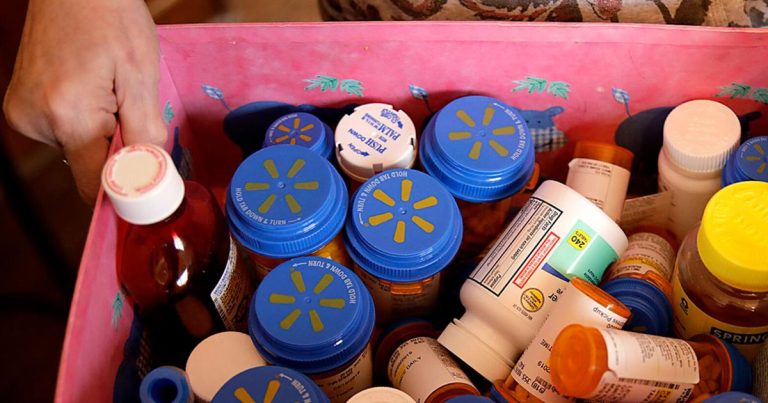Opinion: Don’t Fall for Big Pharma’s Claims About a Program Benefiting Oklahomans
The pharmaceutical industry, often referred to as "Big Pharma," wields significant influence in the healthcare landscape, shaping policies and public perceptions related to medication access and affordability. Recently, Oklahoma has become a battleground for a contentious debate surrounding a proposed pharmaceutical assistance program. While proponents, including Big Pharma representatives, tout the program as a boon for Oklahomans struggling with prescription drug costs, a closer examination reveals potential pitfalls and hidden agendas that warrant a healthy dose of skepticism. This analysis aims to dissect the arguments put forth by Big Pharma, exposing the potential downsides and urging caution before embracing a program that might ultimately benefit the industry more than the patients it claims to serve.
One of the central arguments advanced by Big Pharma is that the proposed program will dramatically improve affordability and access to essential medications for vulnerable populations in Oklahoma. They paint a picture of Oklahomans struggling to afford life-saving drugs, forced to make impossible choices between vital medications and other essential needs. While the issue of medication affordability is undeniably a pressing concern, Big Pharma’s portrayal often lacks crucial context. They fail to acknowledge the role their own pricing practices play in creating this affordability crisis, focusing instead on a narrative that positions them as saviors rather than contributors to the problem. The proposed program, they argue, will bridge the affordability gap, providing much-needed relief to struggling patients. However, critics argue that the program’s design may inadvertently exacerbate the problem by further entrenching the industry’s power to dictate drug prices, ultimately leading to long-term cost increases that outweigh any short-term benefits.
A closer examination of the program’s structure reveals potential loopholes that raise concerns about its true impact. The program relies heavily on rebates negotiated between pharmaceutical companies and pharmacy benefit managers (PBMs). While rebates are often touted as a cost-saving mechanism, they lack transparency and have been criticized for benefiting insurers and PBMs more than patients. A significant portion of these rebates never reaches the consumer, instead enriching intermediaries within the pharmaceutical supply chain. Furthermore, the program’s eligibility criteria may exclude certain populations, leaving many vulnerable Oklahomans without access to the promised assistance. This raises the question of whether the program is truly designed to address the needs of all Oklahomans struggling with medication costs, or whether it prioritizes the interests of a select few while solidifying Big Pharma’s market dominance.
Another concerning aspect of Big Pharma’s campaign is the use of emotionally charged language and misleading statistics to sway public opinion. They present anecdotal stories of patients who have benefited from similar programs in other states, often omitting crucial details about the program’s limitations and long-term consequences. They use statistics selectively, highlighting the number of people potentially enrolled in the program while downplaying the potential cost to taxpayers and the limited impact on overall drug prices. This manipulation of information creates a distorted picture of the program’s effectiveness, making it difficult for the public to make informed decisions based on factual evidence.
Furthermore, Big Pharma’s influence extends beyond public relations campaigns. They lobby extensively at the state and federal levels, often contributing generously to political campaigns and building relationships with key policymakers. This influence allows them to shape legislation that favors their interests, sometimes at the expense of patients and taxpayers. The proposed pharmaceutical assistance program in Oklahoma is no exception. Critics argue that the program has been designed with input from the pharmaceutical industry, incorporating provisions that protect their profits while providing only limited relief to patients. This raises concerns about the potential for regulatory capture, where the industry effectively controls the very entities meant to regulate it.
In conclusion, the claims made by Big Pharma regarding the proposed pharmaceutical assistance program in Oklahoma should be met with healthy skepticism. While the program is presented as a solution to the affordability crisis, a closer examination reveals potential pitfalls and hidden agendas. The lack of transparency surrounding rebates, the potential exclusion of vulnerable populations, and the industry’s history of manipulating drug prices raise serious concerns about the program’s true impact. Oklahomans must demand a thorough and independent analysis of the program’s potential benefits and drawbacks before embracing a solution that may ultimately benefit Big Pharma more than the patients it claims to serve. It is crucial to prioritize patient needs and long-term affordability over short-term solutions that further entrench the industry’s power and perpetuate the cycle of rising drug prices. Only through careful scrutiny and informed decision-making can we ensure that any pharmaceutical assistance program truly serves the interests of Oklahomans and not the bottom line of Big Pharma.


